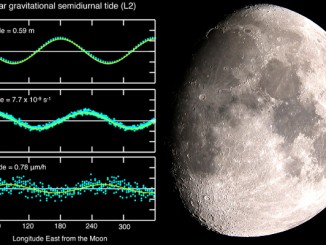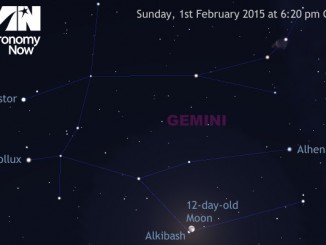
A rock that slammed into the Moon during a widely viewed total lunar eclipse in January likely hit the surface at some 61,000 kilometres per hour (38,000 mph), releasing the energy of 1.5 tonnes of TNT and blasting out a crater 10 to 15 metres (33 to 49 feet) across, astronomers report in Monthly Notices of the Royal Astronomical Society.
Based on a detailed analysis of the brilliant, short-lived – 0.28 second – burst of light that accompanied the impact, the astronomers concluded the rock had a mass of about 45 kilograms (100 pounds) and measured 30 to 60 centimetres (12 to 24 inches) across. Debris ejected by the impact likely reached a peak temperature of around 5,400 degrees Celsius (9,750 Fahrenheit).
The eclipse occurred on 21 January and was visible across western Europe and North and South American. At 4:41 GMT, just after totality began, many observers noted a brief flash on the Moon’s darkened surface.
Jose Madiedo of the University of Huelva and Jose L. Ortiz of the Institute of Astrophysics of Andalusia operate the Moon Impacts Detection and Analysis System, or MIDAS, using eight telescopes in southern Spain to monitor the lunar surface. MIDAS video captured the moment of impact, the first ever filmed during a lunar eclipse. Observing at multiple wavelengths, the researchers were able to calculate the size of the impacting body and the energy released.
“Something inside of me told me that this time would be the time,” said Madiedo, adding the event was brighter than most previously detected by the MIDAS survey. “It would be impossible to reproduce these high-speed collisions in a lab on Earth. Observing flashes is a great way to test our ideas on exactly what happens when a meteorite collides with the Moon.”



